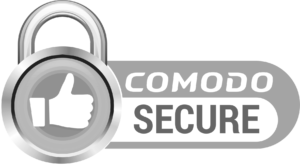What is debt funding? Pros and cons of debt funding
Debt funding can enable small enterprises to grow and expand their businesses. However, the concept of debt funding is quite often misunderstood. There are several debt funding options from traditional banks. Businesses and business owners that are interested in finding debt funding options for their businesses should have an understanding of how debt funding works, how it can support their businesses and how to find the right funder. This article provides information on what debt funding is and the pros and cons of choosing this financing option.
What is debt funding?
Debt funding is also known as debt financing or debt lending. Many businesses are eagerly looking for ways to grow, expand their operations and find new markets, and to do that, they need finance options that provide the capital for these expansions. Debt funding or debt financing is one of those funding options. Debt funding is simply a technical term for borrowing money from an outside source. The money is borrowed with the promise to return the initial amount plus the interest rate that will be agreed upon.
Typically, when people think of debt funding, they think of traditional banks. However, there are several other methods of financing your business through debt. The various types of debt financing available to small businesses include business loans, microloans, peer-to-peer loans, and credit cards.
If you are looking at taking funds from an outside source as the way to go for your business, then you should be cognizant of the advantages and disadvantages of this financing option. It is also important to remember that what works for one business may not be the best option for another. Below are the pros and cons of debt funding to your business.
How Debt Funding works
Understanding how debt funding works is the first step to deciding whether or not to choose this financing option. Debt is simply an exchange between a borrower and a lender. A business of money seeks out an individual or enterprise that can loan them that amount. The lender will give the business a principal amount with certain conditions for repayment and an interest rate that is agreed upon. The condition includes whether payment will be made in full or in installments and any penalties for defaulting or late payments. Once all terms and conditions have been agreed upon, the funds are made available to the borrow to support the business plan that had been discussed with the lender.
Pros of debt funding
- Owners keep business control
One of the major advantages of debt funding is that business owners get to maintain control of these businesses. There is no need to give up a stake in your business in exchange for capital as is the case with selling company shares. Debt funding does not give any kind of control to the lender. The decision-making and business control do not undergo any external filtration or influence. This means that the business owners still retain 100% of control. While you may lose some of your tangible assets if you fail to repay the loan, you will not lose strategic control of your business; provided you have legally protected your assets. I recommend that you seek the advice of a corporate attorney and accountant for better asset protection information.
- Flexible repayment plans
Another advantage of debt funding is that it offers very flexible repayment plans. How are repayments flexible? Repayments and interest are set out in advance and this makes it easier for business owners to monitor the cash flow of their business and effectively plan for future expansion. It also allows businesses to plan their finances and budget better because they will know how much is needed to be paid back each month.
- Flexible opportunities
Taking on debt can boost your company’s credit, which is good for future borrowing and insurance rates. Long-term debt can also be used for several business opportunities. It can be advantageous for shareholder transactions, capital growth, and property developments. Each business is unique and has unique strategies. That means each business also has the task of finding the right partners that would contribute to their overall growth and business strategies.
- Tax deductions
You can usually deduct interest payments (but not principal repayments) as business expenses. The interest you pay on your loan is tax-deductible. This means that debt financing protects some of your business’s income from taxes and reduces your tax liability every year. Your interest is usually based on the prime rate. To some business owners, taxation is a major factor when deciding whether or not to use debt funding. This is because most of the time the principal and the interest payments on business loans are classified as business expenses. Which are deductible from business income taxes.
Cons of debt funding
- Paying back the debt
The difficult part about getting a loan may be paying it back. It would be easy to make payments to the bank or any other lender you choose on the stipulated date if you have money flowing in the business. That would make for a stress-free situation. But heat happens when the business is not producing the desired results and sales are down? Worst-case scenario the business fails and you have no way to pay back the loans. Your business failing or running low on cash doesn’t excuse you from your debt. Business debt financing can be a risky option if your business isn’t completely solid ground. In the case where your business is forced into bankruptcy, your lenders would have the right to claim repayment before equity investors.
- High-interest rates
You will have to pay interest, which is usually accounted for as a liability on the company’s balance sheet. Peer-to-peer lenders would agree to lend you money with very low interest rates or no interest at all. That’s not the case with traditional banks or other lenders. What’s true is that interest rates would vary depending on several factors including your business’ credit history and the type of loan you are trying to get. You may still pay quite a high-interest rate every month that would put a dent in your profits even after calculating the discounted interest rate from your tax deductions.
- The effect on your credit rating
If you have a lot of debt, you will be considered as a “high risk” borrower by potential lenders. This will restrict your capacity to put up capital through equity financing in the future. What you borrow does affect your credit rating. This can have a negative effect if you are borrowing huge sums. Lenders would consider you to ask a high-risk borrower which means you are more likely to pay higher interest rates.
- Cash flow difficulties
Not every business has the same cash flow and monthly income. Depending on the product or service offered, every business experiences a peak and a slum season. Lenders would not consider this as a good enough reason to miss a payment. They typically expect equal monthly installments on any debt. This makes it difficult to make payments and would often lead to late payment or defaulting all of which have a long-term effect on your credibility in the eyes of lenders and potential investors. Except you are sure you can pay back the loan, getting one isn’t a great idea.
Other disadvantages include:
- Since you are going to borrow money to run your business, you may end up committing yourself to a large business expense.
- You may be under pressure to repay the loan with the money you need for some other aspects of your business. In such a situation, your business suffers; and may never recover!
- If you get loans from family or friends and you have trouble repaying them or maintaining payment terms, it can ruin your relationship with them; temporarily or permanently.
- If you borrow from a bank or commercial lender, you must pledge your property as collateral for the loan. (If you don’t repay the loan, the lender can take the property and sell it to get the money back.) If you pledge business assets as collateral for the loan and are unable to repay, you could lose those assets when you need them most. Worse, if you pledge personal possessions, like your home or stock portfolio, you risk losing them to pay off a business debt.
- Getting a business loan is always very difficult if you don’t have a good credit rating and history, solid finances, and collateral.
- Debt financing can be very expensive for small businesses due to the risk/return ratio.
- Debt can hinder a company’s growth due to the high cost of repaying the loan (due to compound interest).
- You are at risk of bankruptcy. The more debt financing you use, the greater your risk of bankruptcy.
Conclusion
In conclusion, there are several ways small businesses can fund their projects and growth. Whether you choose to use debt funding or any other alternative financing methods, make sure to choose the best option for your business. You can secure the future of your business if you make the right choices today.



